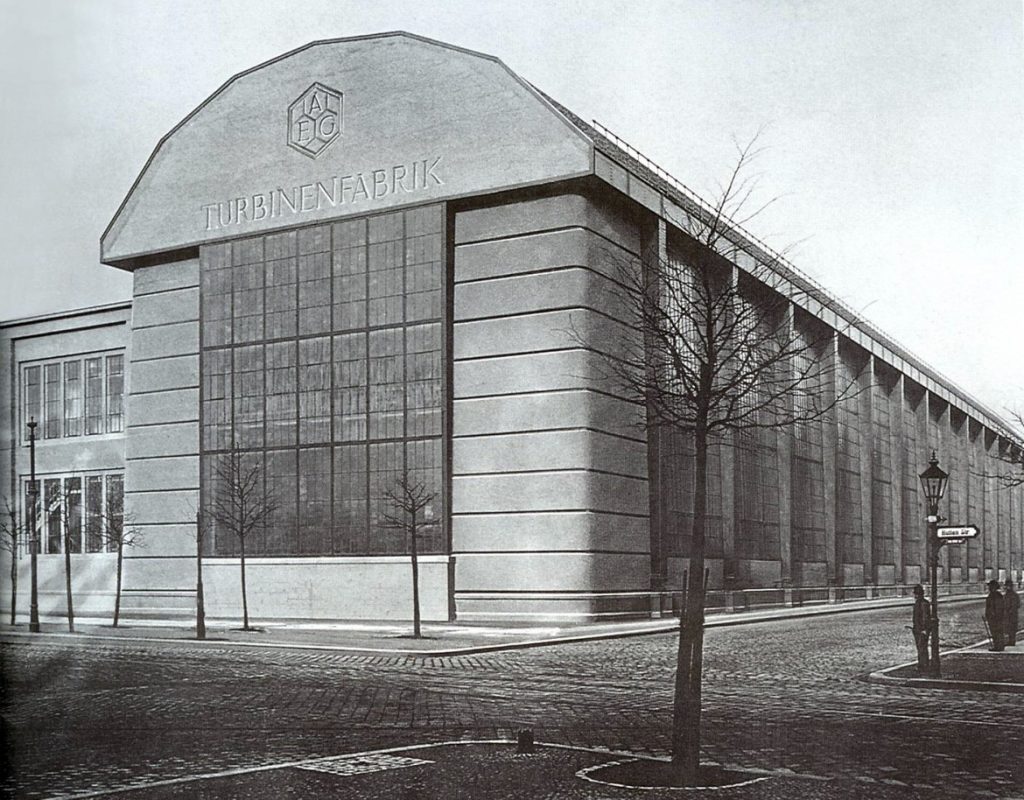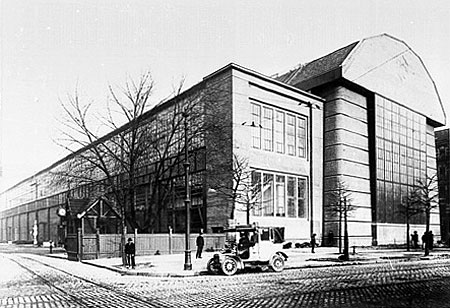Cubism and Corporate Identity (1905-1915)
Summary:
In this week’s lecture, we learned about the impact of modern art, plakatstil, and the origins of corporate identity. Modern art was developing. Artists such as Paul Cezanne, Pablo Picasso, Georges Braque, and Marcel Duchamp were all part of the art movement known as cubism. The Armory Show in New York City was an international exhibition of modern art that changed the way Americans thought about modern art. Hundreds of artists participated in this exhibition and The Armory was called the most important exhibition ever held in the US.
In 1905, Lucian Bernhard designed a poster for Priester Matches, creating the plakatstil style (poster style). This style consisted of only two basic elements, the product name and the product image, and conveyed a message that was both impactful and effective.
The AEG turbine factory designed by Peter Behrens was the first to have a logo and a corporate identity, making Behrens the first logo/corporate identity designer. This designer was also the first to design a typeface for a specific company where the company only used this typeface- the Behrens Schrift typeface designed for AEG.
Many other inventions were also created during this time. The first Model T was produced by Ford Motor Company and invented the factory line, cutting costs of production. In 1909, an early Autochrome colour photograph was invented by the Lumiere Brothers, Gertie the Dinosaur by Winsor McCay introduced keyframe animation, and in 1914, the American Institue of Graphic Arts (AIGA) was founded.
Even though this week only consisted of a decade, I was surprised to see so many important inventions take place. I was especially interested in the invention of plakatstil and the first logo and corporate identity. Just created a hundred years ago, I was thrilled to find companies using art and design to market their products in a new, effective, and unique way.
Research:
For this time period, I was assigned to the subject of “architecture” and have decided to research the AEG Turbine Factory and industrial classicism.
Located in the Moabit district of Berlin, the AEG Turbine Factory was designed by Peter Behrens. Due to Behrens’ designs, the AEG Turbine Factory was an early example of industrial classicism.

https://designhistoryresearch.files.wordpress.com/2010/11/peter-behrens-1.jpg
But first, what is industrial classicism?
Classicism or Neoclassicism that was popular in the 1750s- 1830s drew inspiration from the Classical architecture of Ancient Rome or of the Renaissance. Industrial classicism then, as seen with the AEG Turbine Factory, is a new classicism that expressed industrial advances that were reshaping contemporary life.
Thus, the AEG Turbine Factory was seen as a cultural icon of modern industrial power. Even if it wasn’t Germany’s first major iron/steel and glass building nor the country’s first industrial construction. And it is true that Behrens, as he designed it, saw the Turbine Factory as a symbol of modernism.

https://ka-perseus-images.s3.amazonaws.com/ebebd6f2d7d3e13c3200f710f807c2de185b4d76.jpg
Originally, Behrens was an artist, so where he lacked in architectural knowledge, he looked at existing successful architects and drew knowledge from there. However, it is exactly because he was an artist that Behrens was able to give form and meaning to the factory in a way that eluded engineers. He focussed the project on the certainty of artists and “artist power” instead of materialism.
Behren hoped to achieve the harmonious traditions of Greek and Egyptian temples with a clear desire of celebrating industry power; the AEG was to be a temple dedicated to the new age of production. He also sought to contextualize his modern construction in the always changing political and social environment of early twentieth century Europe.
In designing the highly functional building for AEG, Peter Behrens chose not to emphasize pure functionalism as he believed that good design never sacrificed the aesthetics in favour of functionality. He made the interior and exterior as simple as possible and designed the factory based on rectangular and circular forms. Huge windows pretty much replaced walls and they provided sunlight to the whole factory, specifically designed this way for its purpose.

https://ka-perseus-images.s3.amazonaws.com/614efb3330080deff85675d22055c26764917703.jpg
AEG buildings are one of the first utilization of industrialized elements in architecture and are considered as the first integral industrial design of history. Through his revolutionary design of the AEG Turbine Factory, Behren expanded the realm of architects’ works and established new guidelines for mass production.
_
References:
- Judy’s Lecture Notes
- “Peter Behrens, Turbine Factory.” Khan Academy, Khan Academy, www.khanacademy.org/humanities/art-1010/architecture-20c/a/peter-behrens-turbine-factory.
- METALOCUS. “AEG Turbine Factory: Milestone of the Industrialization.” METALOCUS, 10 Aug. 2017, www.metalocus.es/en/news/aeg-turbine-factory-milestone-industrialization.
- Design History Research, designhistoryresearch.wordpress.com/category/peter-behrens/.
- Kemp, Martin J., and Jan Joseph Marie Timmers. “Western Architecture.” Encyclopædia Britannica, Encyclopædia Britannica, Inc., 13 Apr. 2018, www.britannica.com/art/Western-architecture/Classicism-1750-1830.

